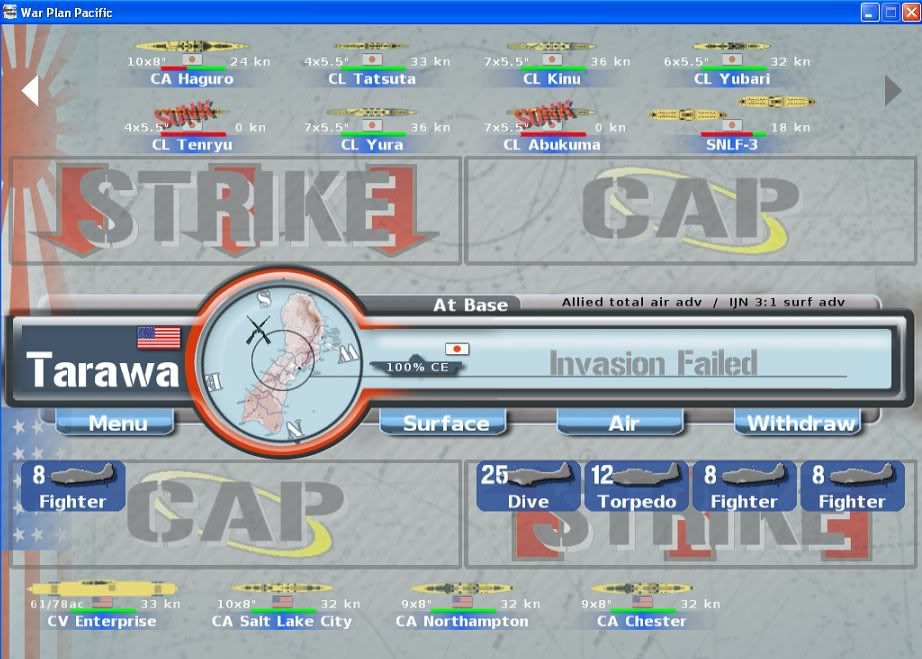Here is the aftermath of a failed invasion:

Although outnumbered 3:1 on Surface, Allies were able to contest the landing from standoff distance. The game does a good job "modeling" which enemy units are targeted. For example, in this particular battle, before the invasion (troops ashore), the aircraft tended to attack the warships, reflecting the fact those ships would be first in range, clearing the way for the transports. However, once the troops were "ashore", the aircraft attacks began to concentrate on the landing forces, reflected both the concept that the troop carriers were the critical targets and the concept that once ashore, it isn't hard to find the targets. Another important point is the allied carrier force was unable to directly contest the landing with a surface action and had to allow the "troops ashore".
I reflect on all this because most of the damage inflicted on the transports occurred after the troops were ashore. I was watching this unfold as they got relentlessly pounded, awaiting the final blow...SUNK. However, this didn't happen. Once the transports took 80% damage, the air attacks ceased targeting the transports and began targeting the warships. This was on turn 4. At the time, I was wondering why they stopped attacking the transports and went back to pounding the warships. Were they going to just allow those troops to take the island?
After the fifth round avoiding the transports and pounding the warships, the "Invasion Failed" was displayed. This sequence of events suggests the computer knew the invasion had failed on turn 4 once the transports had reached 80% damage, and no longer seeing the transport as threat, began targeting warships again.
Is this how it works? Once the invasion fleet is pounded beyond success, they are no longer considered a threat, and the target priority goes back to warships?
Edit: In an unrelated comment, this type of battle is what makes this game so much fun. It illustrates the power of a small carrier force to thwart the intentions of a much more powerful surface group. It also illustrates that while the carrier force could thwart the surface group, it could not outright stop it from reaching its objective.



